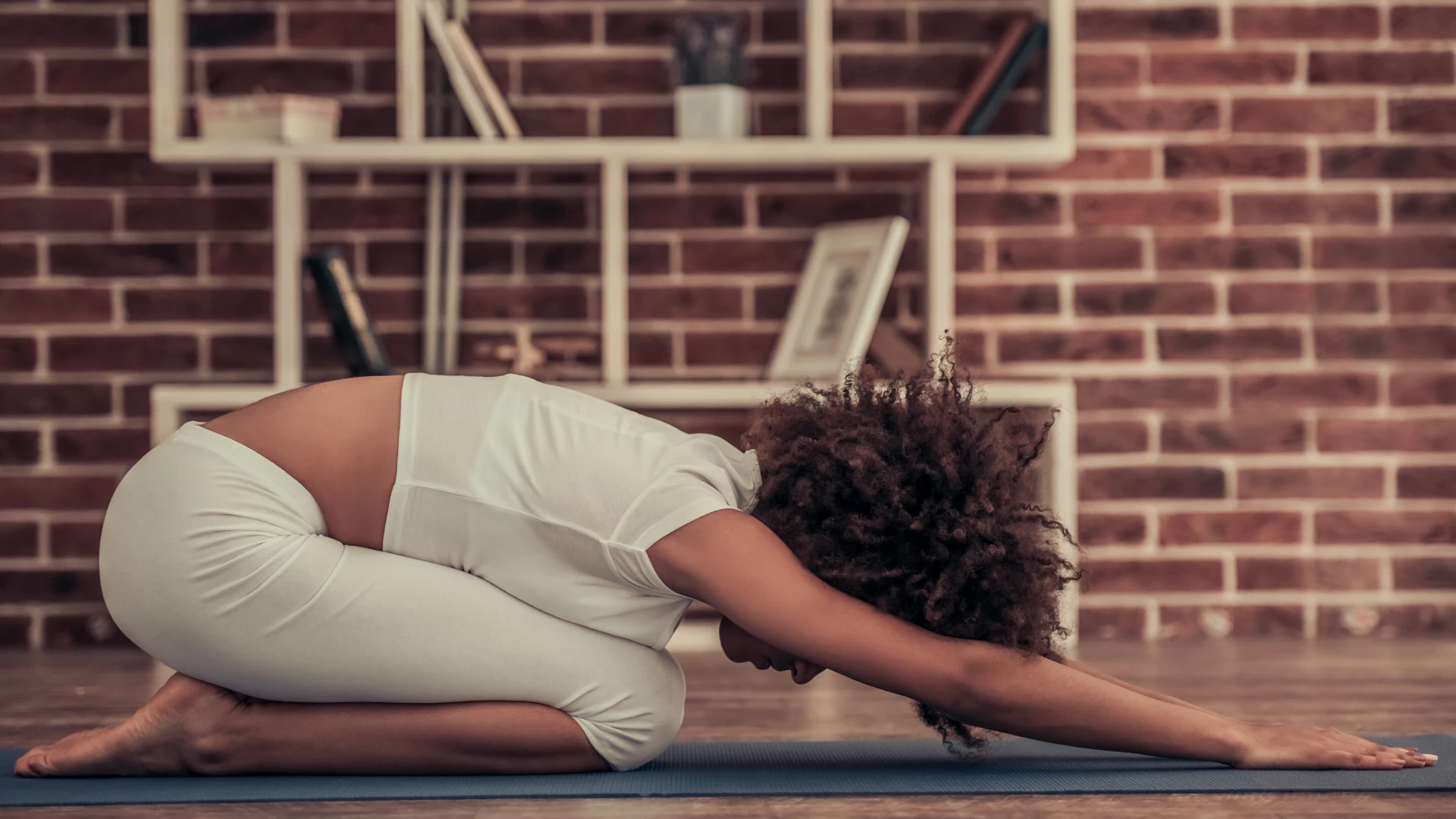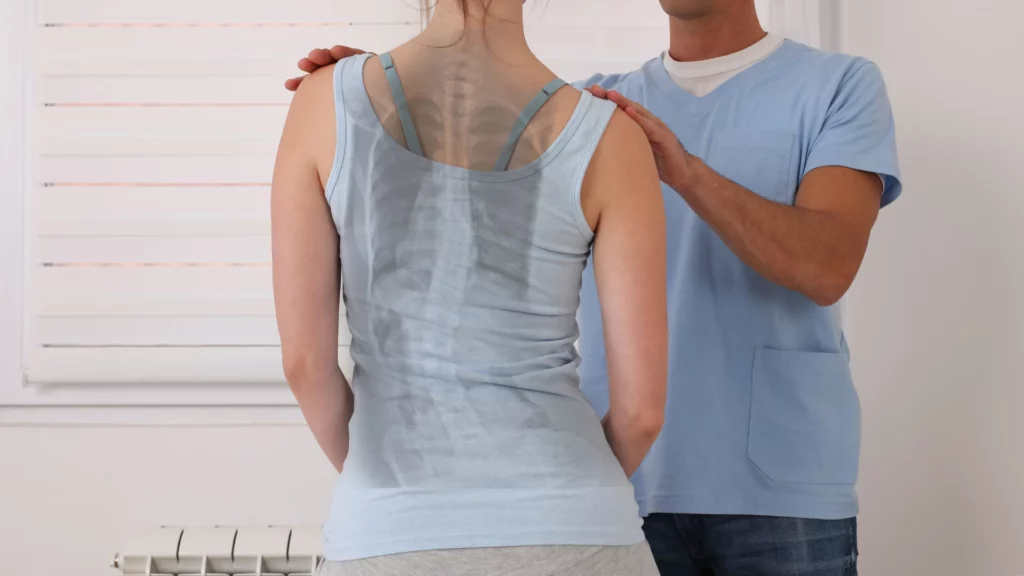Yoga for Back Pain and Scoliosis: Keys to Addressing Spinal Imbalances with Yoga

Article At A Glance
Are you one of the millions who suffer from back pain from scoliosis? Read this article to discover how yoga can improve muscular balance and achieve a centered, pain-free life. Start your healing journey today and alleviate back pain for good.
Do you live with back pain or scoliosis? No matter the cause of your condition, a yoga practice that meets the needs of your unique spine may help!
In this article, Certified Yoga Therapist Deborah Wolk, founder of the Samamkaya Yoga Back Care & Scoliosis Collective in New York City, shares her first-hand experience and relates how yoga helped her to improve her muscular balance, bring her spine into a more neutral state, and reduce her chronic back pain. She now helps her students achieve similar results.
In 17+ years of teaching, Deborah has helped people with back pain conditions of every stripe find relief through yoga via a strong focus on functional alignment. She says that yoga can help with pretty much any musculoskeletal issue by finding space in the joints throughout the body. “The joints in the spine, the joints in the arms and legs or in the neck or at the base of the skull – all that space is going to bring some relief,” she says.
Understanding Scoliosis and Back Pain
One particular strong suit of Deborah’s is working with scoliosis. A healthy spine has neutral curves in the sagittal plane that offset each other, called kyphosis in the thoracic spine or lordosis in the lumbar area. In scoliosis, however, the spine also has a sideways curvature, often combined with a rotation as well.
Understanding these unique spinal twists and turns is important. “In the United States, the model is that people have one C curve or two curves that make an S, which is shown on their lateral plane or an x-ray. But scoliosis is also rotational, so one curve is turning one way, and the other curve is turning the other way,” Deborah explains.
Most people receive a diagnosis of scoliosis in their teens. Still, Deborah was only vaguely aware of her spinal irregularity and never connected it to having suffered a few serious falls that caused her chronic back pain. Taking up yoga as an adult, her yoga teachers cued her into her scoliosis. Learning about her own condition alerted her to the prevalence of spinal asymmetries in others and inspired her to focus her teaching practice on working therapeutically with back issues.
“I realized that everyone I looked at had some asymmetry or an alignment issue that they needed to focus on,” she says. “We’re not symmetrical. The organs are not symmetrical. Nothing is really symmetrical in the body. Even in the womb, we have one leg in front of the other and one arm in front of the other. We are born with patterns that we work with for our whole lives.”
Working with Scoliosis and Back Pain: The Basics

With scoliosis, working on each individual pattern can be a bit like solving a puzzle or, at the very least, unraveling the curves. Deborah starts with basics: “The first thing I teach my students is how to identify where their curves are and then to differentiate between the convex and the concave,” she says. “A person with a very pronounced scoliosis might know the convexity, but often they’ll shut off the concavity. We have to alert the nervous system to those. I have them do something very simple like Adho Mukha Virasana (Child’s Pose) or stand up against the wall, feel their concavity, and learn to breathe into that area.”
From there, you can take that breath into standing poses or the twists that will help de-rotate the spine. This can be tricky stuff because you are working one rotation against another. This is where working with a well-trained teacher or yoga therapist is a smart strategy.
Understanding the specific curvature and rotational patterns of your spine is important for another reason: Deviations can have a big effect on one’s nervous system. “With scoliosis, your joints are at an angle and misaligned with the trunk,” Deborah explains. “Your nerve pathways are different, and you have different proprioceptive feedback. People with scoliosis will have a distortion of where they are in space.”
The realization that her feedback channel was impaired was a big eye-opener for Deborah. “That’s when things really started to click for me about why I had coordination problems as a child and why yoga as an adult was difficult. I could do everything to one side and nothing to the other side. I could not feel why it was happening. When it started to make sense to me, I started really relating to the nervous system aspect of scoliosis.”
Scoliosis can be structural, muscular, or a combination of both. And it can change throughout one’s lifetime. Because it’s affected by hormonal balance, women going through pregnancy or postpartum may experience changes in their spinal alignment and their ligamentous elasticity, likewise, with menopause. “It’s not uncommon for a sixty-year-old to come to me and say, ‘I never had this. I didn’t know anything about it,’” Deborah relates.
Yoga Practice for Alignment of the Spine
Deborah teaches her students to develop a healthy balance between their spinal curves, to elongate and neutralize the areas that are overly curved. “They need to see that, how to sense that, and how to create that into postures,” she says.
Once her students have an understanding of their spines, Deborah says it’s time to break down the poses to suit each person’s unique structure and needs. “One of my teachers, BKS Iyengar, used to say, ‘Break the pose and not the body.’ Instead of trying to make a shape like you see in a book, create part of a posture that will bring the right action into the part of the spine that is misaligned.”
While many students want to address strength immediately, Deborah first addresses length and de-rotation. As a starting point, creating axial extension with poses such as Adho Mukha Svanasana or Dog Pose on the ropes can help to restore length. Once spinal extension has been achieved, one can observe how the arms and the legs are connected to the body.
The next step is de-rotation, which Deborah explains involves two areas of the spine for most people. “One has to think about where they’re breathing and where they’re moving from. So slowly calm the breath and learn to slowly and appropriately de-rotate.”
Finally, it’s time for spinal strengthening, abdominal strengthening, lumbar strengthening, and spinal strengthening in traction.
“Many of my students have been with me for many years and are very committed to the practice,” Deborah says. “They feel better so they keep coming back and they may even take these principles and new strength to other practices,” says Deborah.
“To me, the practice of yoga is the alignment of the spine. It’s about balance and feeling the body. When you have a spinal imbalance, and you’re not addressing it with your yoga, then I’m not quite sure what you’re doing. The goal of practice is to look for that. Not to correct it, necessarily, but to sense it and move into a more centered place.”
JOIN YOGAUONLINE FOR AN ULTIMATE BACK CARE COURSE LOADED WITH OPTIONS AND RENOWNED WELLNESS TEACHERS!

Also, read...
The Benefits of Twists: 5 Great Twisting Yoga Postures for a More Resilient Low Back
Yoga for Tight Shoulders—Help With an Imaginary Sticky Mat
Happy Hips: 5 Strategies to Stabilize Your SI Joints in Yoga
Related courses
Breath as Medicine: Yogic Breathing for Vital Aging
Yoga and Myofascial Release: Releasing Chronic Tension with the Bodymind Ballwork Method
Yoga and Detoxification: Tips for Stimulating Lymphatic Health

Lynn Crimando, MA serves as the lead teaching mentor for YogaUOnline’s Wellness Educator Program. She is a yoga teacher, C-IAYT Yoga Therapist, board-certified Health and Wellness Coach, and a Buteyko Practitioner. Lynn is certified by the National Academy of Sports Medicine as both a Certified Personal Trainer and a Corrective Exercise Specialist. She has a private practice in the New York City area and teaches ongoing classes on behalf of Health Advocates for Older People. To learn more about Lynn, visit her website: yogalynn.com.



